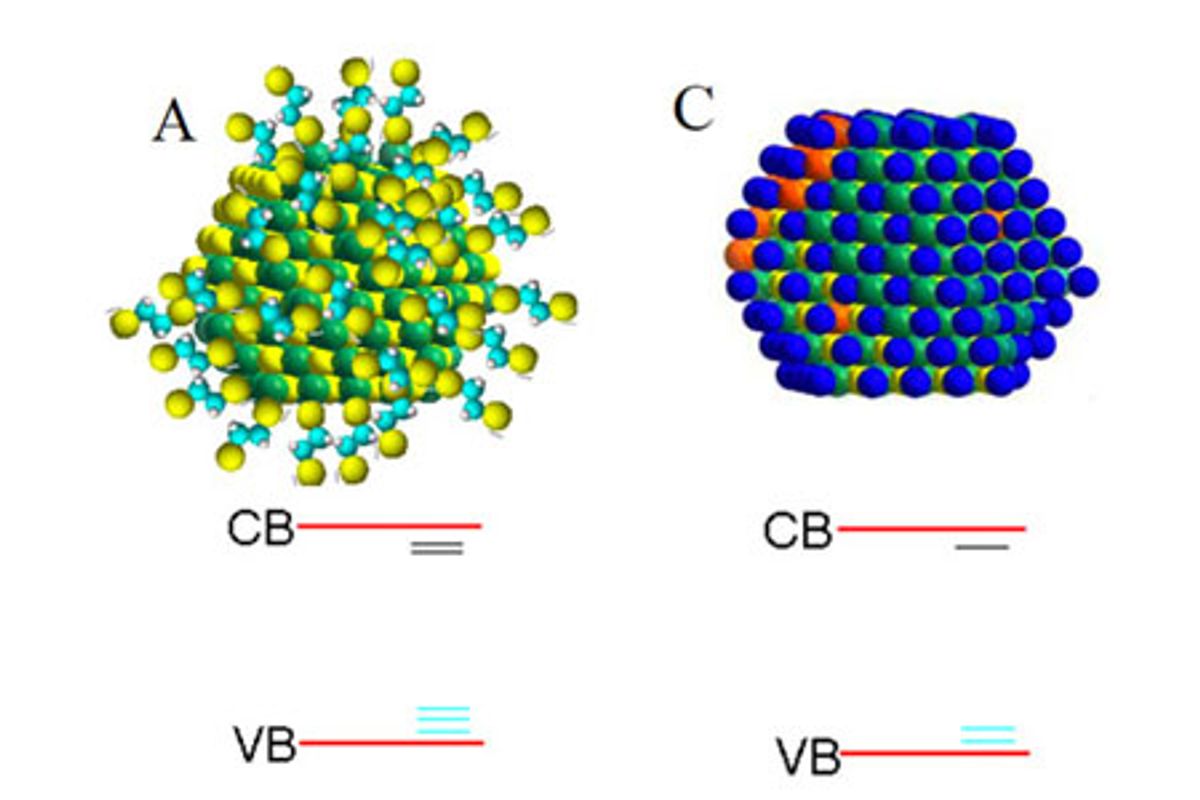Back at the end of June this year, I covered work that Edward H. Sargent and his research team at the University of Toronto conducted in making solar cells from colloidal quantum dots (CQDs) more efficient.
At that time, the solar power conversion efficiency for the device they described in their Nature Photonics article was 4.2 percent.
Now the Sargent team, along with researchers from King Abdullah University of Science & Technology (KAUST) and Pennsylvania State University (Penn State), has bumped that number up to 6 percent, creating what is claimed to be “the most efficient colloidal quantum dot (CQD) solar cell ever.”
This time, the research was published in the journal Nature Materials and showed that quantum dots could be more densely populated on a surface by using inorganic ligands in the place of organic molecules, allowing the quantum dots to be closer together.
“We wrapped a single layer of atoms around each particle. This allowed us to pack well-passivated quantum dots into a dense solid,” explained Dr. Jiang Tang, the first author of the paper, who conducted the research while a post-doctoral fellow in the Edward S. Rogers Department of Electrical and Computer Engineering at U of T.
As I mentioned in my initial piece on this line of research back in June, the Saudi Arabian government has been financing Sargent’s work in this area to the tune of US $10 million since 2008.
In this latest phase of the research, it appears KAUST was involved in the research by contributing the microscopy and visualization aspects. In addition, it seems that the licensing deal on this research is going to be shared by the University of Toronto and KAUST.
“The world—and the marketplace—need solar innovations that break the existing compromise between performance and cost. Through the partnership between U of T, MaRS Innovations, and KAUST, we are poised to translate exciting research into tangible innovations that can be commercialized,” said Sargent.
If Sargent’s previous prediction proves correct, that these CQD materials in photovoltaics will be in building materials, mobile devices, and automobile parts in the next five years, there may some time yet before the licensing agreement will mean much. Meanwhile, inexpensive alternatives, namely dye-sensitized solar cells, are reaching 10 percent conversion efficiency now and appear poised to enter new markets.
Dexter Johnson is a contributing editor at IEEE Spectrum, with a focus on nanotechnology.




